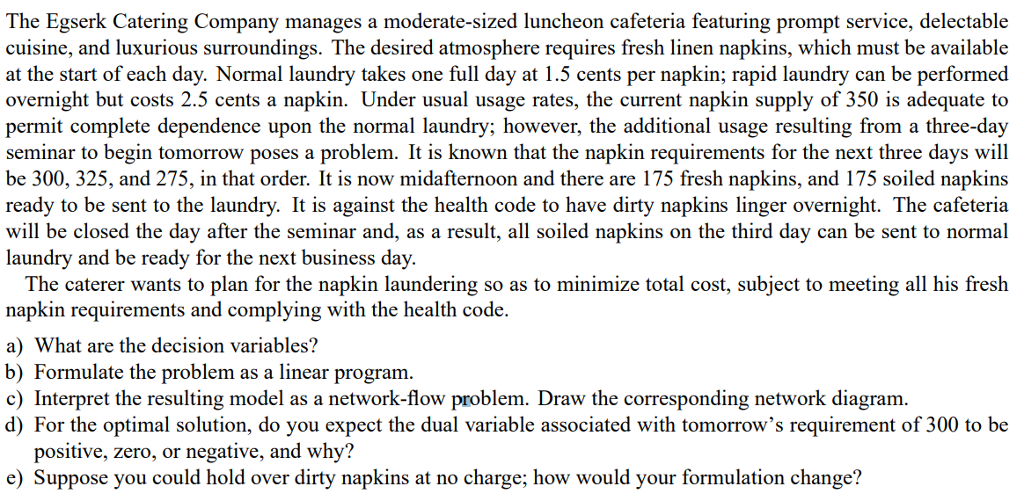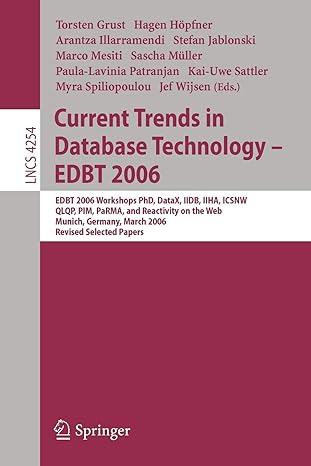
The Egserk Catering Company manages a moderate-sized luncheon cafeteria featuring prompt service, delectable cuisine, and luxurious surroundings. The desired atmosphere requires fresh linen napkins, which must be available at the start of each day. Normal laundry takes one full day at 1.5 cents per napkin; rapid laundry can be performed overnight but costs 2.5 cents a napkin. Under usual usage rates, the current napkin supply of 350 is adequate to permit complete dependence upon the normal laundry; however, the additional usage resulting from a three-day seminar to begin tomorrow poses a problem. It is known that the napkin requirements for the next three days will be 300, 325, and 275, in that order. It is now midafternoon and there are 175 fresh napkins, and 175 soiled napkins ready to be sent to the laundry. It is against the health code to have dirty napkins linger overnight. The cafeteria will be closed the day after the seminar and, as a result, all soiled napkins on the third day can be sent to normal laundry and be ready for the next business dav. The caterer wants to plan for the napkin laundering so as to minimize total cost, subject to meeting all his fresh napkin requirements and complying with the health code. a) What are the decision variables? b) Formulate the problem as a linear program c) Interpret the resulting model as a network-flow problem. Draw the corresponding network diagram d) For the optimal solution, do you expect the dual variable associated with tomorrow's requirement of 300 to be positive, zero, or negative, and why? e) Suppose you could hold over dirty napkins at no charge; how would your formulation change? The Egserk Catering Company manages a moderate-sized luncheon cafeteria featuring prompt service, delectable cuisine, and luxurious surroundings. The desired atmosphere requires fresh linen napkins, which must be available at the start of each day. Normal laundry takes one full day at 1.5 cents per napkin; rapid laundry can be performed overnight but costs 2.5 cents a napkin. Under usual usage rates, the current napkin supply of 350 is adequate to permit complete dependence upon the normal laundry; however, the additional usage resulting from a three-day seminar to begin tomorrow poses a problem. It is known that the napkin requirements for the next three days will be 300, 325, and 275, in that order. It is now midafternoon and there are 175 fresh napkins, and 175 soiled napkins ready to be sent to the laundry. It is against the health code to have dirty napkins linger overnight. The cafeteria will be closed the day after the seminar and, as a result, all soiled napkins on the third day can be sent to normal laundry and be ready for the next business dav. The caterer wants to plan for the napkin laundering so as to minimize total cost, subject to meeting all his fresh napkin requirements and complying with the health code. a) What are the decision variables? b) Formulate the problem as a linear program c) Interpret the resulting model as a network-flow problem. Draw the corresponding network diagram d) For the optimal solution, do you expect the dual variable associated with tomorrow's requirement of 300 to be positive, zero, or negative, and why? e) Suppose you could hold over dirty napkins at no charge; how would your formulation change







